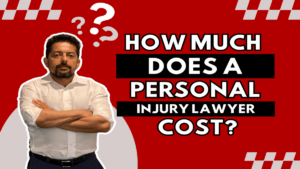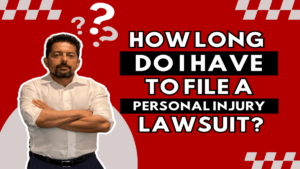Filing a personal injury lawsuit can be overwhelming, but understanding the process and taking prompt action is crucial to protect your rights. In this guide, we’ll walk you through the essential steps involved in filing a personal injury lawsuit. Whether you’ve been injured in an automobile accident, slip and fall incident, or another type of mishap, knowing how to file a personal injury lawsuit is vital to seek the compensation you deserve.
Understanding the Legal Process
Before exploring the specifics of filing a personal injury lawsuit, it’s essential to have a basic understanding of the legal process. Personal injury law encompasses a broad range of cases, including automobile accidents, slip and fall incidents, medical malpractice, and more. Each case is unique, but they all follow a similar trajectory in terms of legal proceedings.
Assessing Your Case
The first step in filing a personal injury lawsuit is to assess the viability of your case. This involves gathering evidence, such as medical records, accident reports, and witness statements, to establish liability and damages. Consulting with a qualified personal injury attorney can help you determine whether you have a strong case and what your options are for pursuing compensation.
Statute of Limitations
One of the most critical factors to consider when filing a personal injury lawsuit is the statute of limitations. This refers to the timeframe within which a lawsuit must be filed to preserve your right to seek compensation. The statute of limitations varies from state to state and depends on the type of case. It’s essential to be aware of these time limitations and take prompt action to ensure that your case is filed within the appropriate timeframe.
Filing Your Lawsuit
Once you’ve assessed your case and consulted with an attorney, the next step is to file your lawsuit. This involves submitting a formal complaint to the appropriate court, outlining the details of your case and the damages you’re seeking. Your attorney will guide you through this process and ensure that all necessary paperwork is filed correctly and on time.
Negotiation and Settlement
After filing your lawsuit, the next phase is typically negotiation and settlement discussions. In many cases, parties involved in a personal injury lawsuit will attempt to reach a settlement before going to trial. This can save time and money and provide a faster resolution for all parties involved. Your attorney will negotiate on your behalf to secure the best possible outcome for your case.
Preparing for Trial
If a settlement cannot be reached, your case will proceed to trial. This involves presenting evidence, calling witnesses, and making arguments before a judge or jury. While going to trial can be a lengthy and stressful process, it may be necessary to secure fair compensation for your injuries.
Conclusion
Filing a personal injury lawsuit is a complex process that requires careful planning and consideration. Understanding the steps involved and the importance of taking prompt action is essential to protect your rights and seek the compensation you deserve. If you’ve been injured due to someone else’s negligence, don’t hesitate to contact an experienced personal injury attorney to discuss your case. Remember, time is of the essence, so don’t delay in seeking the help you need to file a personal injury lawsuit.
If you have any questions or need assistance with filing a personal injury lawsuit, don’t hesitate to contact us at 816-842-9100 for a free consultation. Our team of experienced attorneys is here to help you navigate the legal process and fight for the compensation you deserve.






















